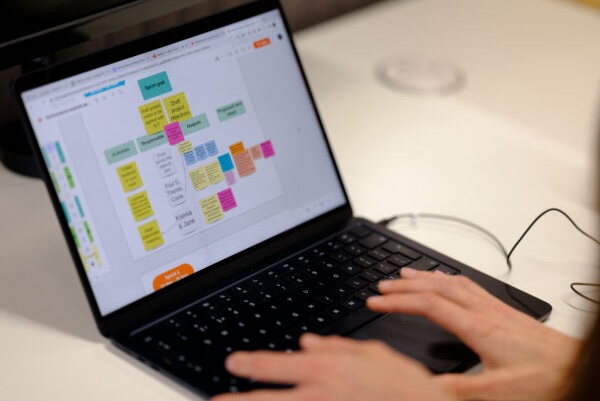A Service Assessment assessment

What really helped was our innate confidence that we knew the team had worked to the standard, and we could talk with confidence about each point
“We need to schedule a service assessment.”
My blood ran cold at these words. I’d heard about service assessments. They were terrifying, intimidating, there to catch you out and trip you up. Failure was likely. Success basically impossible.
I read the 14-point Service Standard until I could recite each point backwards – maybe that would help? I tried to get the ball rolling a hundred different ways: maybe a Miro board was the way forward? Or a spreadsheet? Maybe Trello tickets? I reached out to people to ask for advice. They all assured me it would be fine, it wasn’t that big a deal and the assessment isn’t there to catch us out. I wondered why no one would tell me the truth.
Getting started
Following the ever sensible and pragmatic advice of Rebecca Stagg, the delivery lead on one of the Ministry of Justice projects dxw is working on, I set up a separate Slack channel and twice weekly check-in calls with the key people who would need to be involved, to try and minimise the noise for the rest of the team: delivery lead (me), product manager, user researcher, tech lead, and content designer. Only the tech lead had been through a service assessment before.
We had a call to figure out a plan of how we would get this done. We started a deck, because when in doubt, start a deck. We assigned different standard points to each of us to lead on. It was progress – chaotic, yes, but progress.
Pivot!
Then: bombshell. We were told we had to record the service assessment in advance of the service assessment. Wut. Oh, and they wanted it 3 weeks before the assessment call itself. This was 10 days before the call was scheduled.
Much confusion.
The service assessment coordinator acknowledged that this was impossible and said, send it over a week beforehand. Our service owner pushed back on this video request – our team was incredibly busy and we’d already moved into national rollout. The video was mandated however, so I broke it to my team that we had to move our timelines forward and be ready for our assessment a week earlier than we’d anticipated. They took it very well and, armed with our hastily assembled deck, we recorded a video of us talking through the service standard points that we were each responsible for.
I think what really helped was an innate confidence within each of us that we knew the team had worked to the standard, and we could each talk with confidence about each point. What was much harder was actually figuring out how to demonstrate that without going into way too much detail. How do you condense months and months of work into a 45-minute video presentation?
Spoiler: we didn’t. Our recording was 90 minutes long.
The multi-talented Nina Belk, user research lead and video editor extraordinaire, edited the video into a seamless recording, stitching in the demos of the end to end service and the technical part. (Tom Hipkin, our tech lead, wasn’t able to join us for the recording so he did his bit separately.) And we sent the video over for the assessment panel to watch ahead of our call 3 days (oops) later.
So, onto the assessment call
The panel was very friendly, very welcoming, and clearly keen to put us at ease. The questions they asked were straightforward, and for the most part, we each naturally swooped in to answer the questions that were most relevant to our individual skill set. It was also clear that the panel had watched the video, which made for more informed questions and, in a funny way, sort of took the pressure off the team.
Even better, was the fact that within a couple of hours we were told we’d met the standard, so we weren’t left hanging for days. We then received a comprehensive report with recommendations for improvements, as well as observations on what they thought we were doing well.
Thoughts on the service assessment
I get the value of the service standard, I really do. But I don’t think the service assessment as it is is that helpful an exercise for the team delivering the product.
What would be more helpful in my opinion would be more regular check-ins with a peer group, perhaps a Show and Tell style check in, but more discussion orientated than a normal Show and Tell. We could use that as an opportunity to talk through what we’d done that month, what we were planning to do over the next month, what user research activities were needed, what technical decisions had been made.
It wouldn’t need any more prep than what we’d already be doing for sprint planning or show and tells, and could be done within an hour. That makes more sense to me, because we could be course correcting, rather than facing a binary met/not met decision.
Now it’s over, I’m glad I can say I’ve been through a service assessment. It was a scary prospect, and the process and preparation needs were ambiguous, but as with most things in this line of work, once you actually see the human side of it, it’s not so bad.